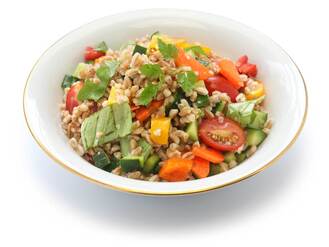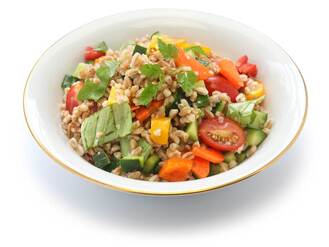 One of the positive effects of the pandemic has been consumers’ reprioritization of health – both mental and physical. According to HealthFocus, nearly two-thirds of U.S. adults say they’re now more focused on their own health than they were a year ago. That is coming through clearly in the functional foods and beverages they are choosing to optimize their immunity, weight, everyday energy and endurance. It’s all the better if what they consume is also sustainable. Whole grains tick all of those boxes, offering protein, fiber, B vitamins, antioxidants, and trace minerals, as well as potentially reducing the risk of heart disease, type 2 diabetes, obesity, and some forms of cancer. What’s more, the Oldways Whole Grains Council says whole grains use less water than other crops, making them a more environmentally friendly choice. Look for ways to integrate more whole grains into your pastas, salads and sandwiches – either as a standard ingredient or customizable option for your guests.  About 30 percent of Americans purposefully avoid gluten. Do you have some reliable go-to grains that help you adapt a dish as needed without sacrificing taste? Across your menu, consider where you might offer brown rice, quinoa, wild rice or gluten-free pastas in place of traditional white rice and pasta. Having a range of these staples on hand can help you stretch your menu – both for guests with gluten allergies and for others looking to customize their order with a nutrient-dense base.  Eating more whole grains is an important step to improving health – they deliver fiber, vitamins, minerals and protein to our diets, all while offering an antioxidant boost. Since whole grains also make a dish more satisfying, they are an easy choice for consumers – they don’t feel like a sacrifice. If your guests are looking for ways to improve their health, help them customize an entrée with whole grains such as quinoa, brown rice or pasta made from whole grains. Go with the grain
As consumers take more steps to protect their health, they’re likely incorporating more whole grains into their diets. The protein, fiber, B vitamins and other nutrients in whole grains can promote weight loss and reduce the risk of diseases. Whole grains also make for a more satisfying dish. In your menu options, skew towards including whole grain ingredients such as brown rice, bulgur and whole grain pasta in your salads, soups and entrées – or at least offering them as a substitute for refined starches. You can help your customers eat healthfully this year – without skimping on taste – by making small tweaks to key ingredients. Incorporating more whole grains into your menu can elevate the content of fiber, B vitamins and other key nutrients in your entrées and sides. Consider offering a whole grain bread as an alternative to sourdough on your sandwiches, or whole grain pasta in place of the traditional variety you use in hot pasta dishes and cold salads.
|
Subscribe to our newsletterArchives
April 2024
Categories
All
|






 RSS Feed
RSS Feed